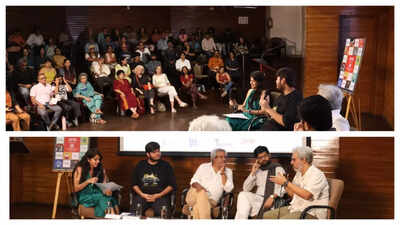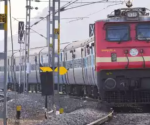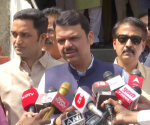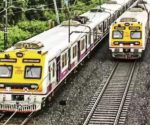Uncovering urban legacies: Mumbai’s icons under the spotlight | Mumbai News – The Times of India

Mumbai’s vibrant past came alive at a riveting discussion on “Uncovering Urban Legacies: Icons of Mumbai – Taxis, Public Clocks, and Statues.” Conservation architect Kruti Garg set the stage, introducing these everyday emblems that quietly define the city’s urban fabric. As moderator, Garg steered a lively dialogue around how these icons have evolved and what they reveal about Mumbai’s shifting identity. The event conceptualised and curated by Asad Lalljee, was attended by Mumbaikars from all walks of life. Photographer Chirodeep Chaudhuri opened the session by delving into his photographic project Seeing Time, chronicling the city’s aging public clocks since 1996. Through haunting images of neglected dials and decaying mechanisms, Chaudhuri highlighted how timekeeping in Mumbai has faded, attributing the decline to rent control restrictions and a shortage of spare parts. He stressed that reviving these “timekeepers” would require a collective civic commitment.
Adding a historical dimension, archaeologist and author Sandeep Dahisarkar reflected on his decade-long study of sculptures at the JJ School of Art. Showcasing stories of little-known statues like those of King George V and King Edward VIII, Dahisarkar emphasized their educational value in distinguishing between Western and Bombay sculpting traditions—a heritage often overlooked amidst the city’s rapid modernization.
Photojournalist Fawzan Husain brought human stories to the fore with his intimate portraits of Mumbai’s once-ubiquitous kaali-peeli taxis. Having documented the Premier Padmini over 18 years, Husain’s images captured the taxi as both witness and participant in the city’s many moods—from riots to festivals. Even as these taxis disappear from the streets, he argued, they remain etched in the city’s collective memory.
Eshan Sharma, founder of Karwaan Heritage, linked Mumbai’s urban symbols to its cinematic legacy. Tracing Bombay’s rise as India’s film capital post-Partition, Sharma described how cinema mirrored the city’s spirit. He championed heritage walks as vital tools to unearth these rich, layered narratives and ensure that Mumbai’s complex histories are neither erased nor forgotten.
As the evening drew to a close, the panel left the audience with a powerful reminder: icons may fade from sight, but preserving their stories ensures they endure across generations.
















